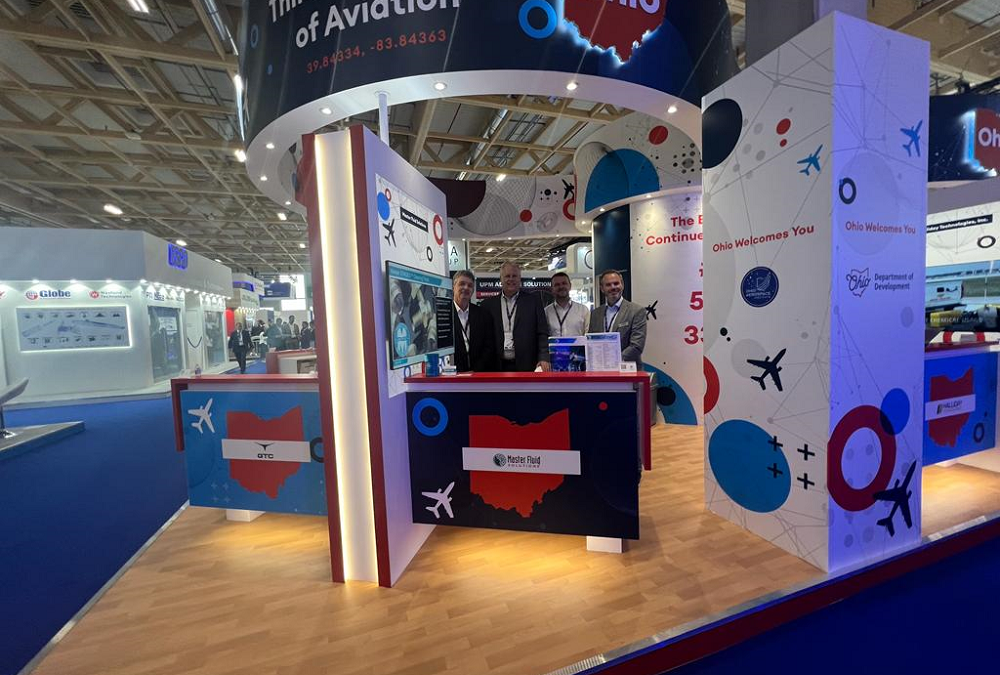After a four-year hiatus during the COVID-19 pandemic, the Paris Air Show returned in 2023 from June 19-25 for its 54th edition, attracting one of the largest audiences in its history. More than 293,000 visitors surveyed the exhibition hall throughout the week, stopping by nearly 2,500 vendor booths from over 48 countries. Attendees signed an estimated $150 billion in deals over the course of the seven-day fair, contributing to the resurgence in aerospace manufacturing as demand increases after the pandemic.
Master Fluid Solutions® exhibited at the event, showcasing the role that high-quality TRIM® cutting fluids play in machining every type of part and component used in aircraft around the world. As the Master team caught up with existing customers and created relationships with new companies, several themes emerged from the stories they shared. Here are our four biggest takeaways from the 2023 Paris Air Show:
1. Supply chain issues underpin every aerospace manufacturing challenge
Though it’s been more than three years since the pandemic first destabilized supply chains, created global labor shortages, and increased inflation, the flow of goods has not returned to normal. Now, geopolitical tensions have created another supply chain issue: a global titanium shortage.
As the primary material used in aerospace manufacturing, the titanium shortage has led to dramatic price increases for the commodity and fierce competition for raw materials. As a result, many manufacturers have begun experimenting with new alloys to replicate titanium’s properties in its absence, but this has not done much to alleviate need. Improving reclamation programs can help manufacturers better utilize chips and achieve maximum ROI on the titanium workpiece materials they purchase.
2. Additive manufacturing is accelerating innovation
Additive manufacturing (AM) was already an increasingly important part of the manufacturing and prototyping process in aerospace manufacturing before the pandemic, but amid inflation and material shortages, many companies have since increased their investment in the technology.
AM is empowering manufacturers with alternative ways to create parts and improving efficiency for the production process. The technology is also helping engineers bring complex parts with new geometries to market more quickly than they could with traditional techniques. Soon, they will be able to revisit and improve existing product designs to utilize fewer individual parts, further minimizing production costs, increasing strength, and reducing overall weight.
3. UAVs are the next big market
Unmanned aerial vehicles (UAVs) have grown in market share in recent years, but recent events have dramatically increased interest in the technology. Many strategies in modern defense are centered around utilizing UAV surveillance. Countries worried about maintaining their own security as hostilities break out are increasing their own defense spending, creating demand for more UAVs and replacement parts — and significant opportunities for aerospace manufacturers that can deliver.
4. Sustainable aviation is improving rapidly
Electric aviation has been behind the curve set by the automotive industry, but battery and fuel technology continues to improve to make fossil-fuel-free flights possible. Before commercial electric aviation can become a reality, the industry needs to substantially improve battery capacity and reliability, electric motor technology, and the aerodynamics of aircraft bodies. In the meantime, companies like Airbus and Boeing focus on developing more sustainable aviation fuel (SAF).
If the 2023 Paris Air Show is any indication, the future of aerospace manufacturing looks bright, but companies must collaborate effectively to soar to new heights. Amid inflation and rising operating costs, manufacturers need to use the most cost-efficient materials throughout their operations to remain competitive. Master Fluid Solutions’ TRIM metalworking fluid offers many aerospace approvals from leading manufacturers such as Boeing and Airbus. Learn more about the competitive edge Master Fluid Solutions provides here.

